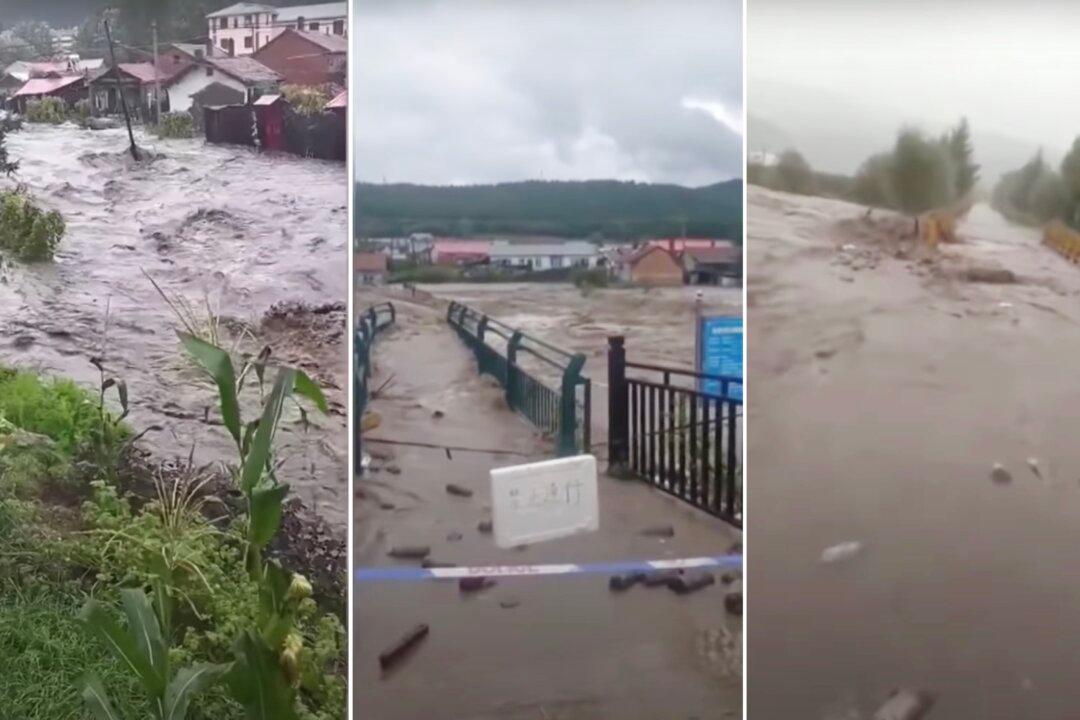Three typhoons hit northeastern China’s Jilin and Heilongjiang provinces from Aug. 27 to Sept. 8, causing heavy rain and devastating flooding.
China’s Emergency Management Ministry said on Sept. 8 that water levels of 23 major rivers in Heilongjiang Province had topped warning levels, but said additional rainfall was in the forecast until Sept. 11. Five of the rivers have risen above their guarantee levels, which means embankment breaches could occur at any time.





